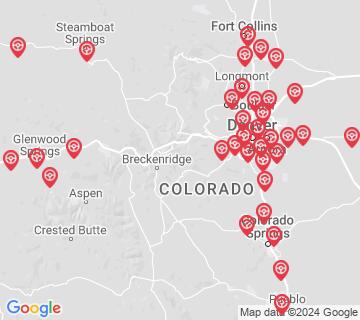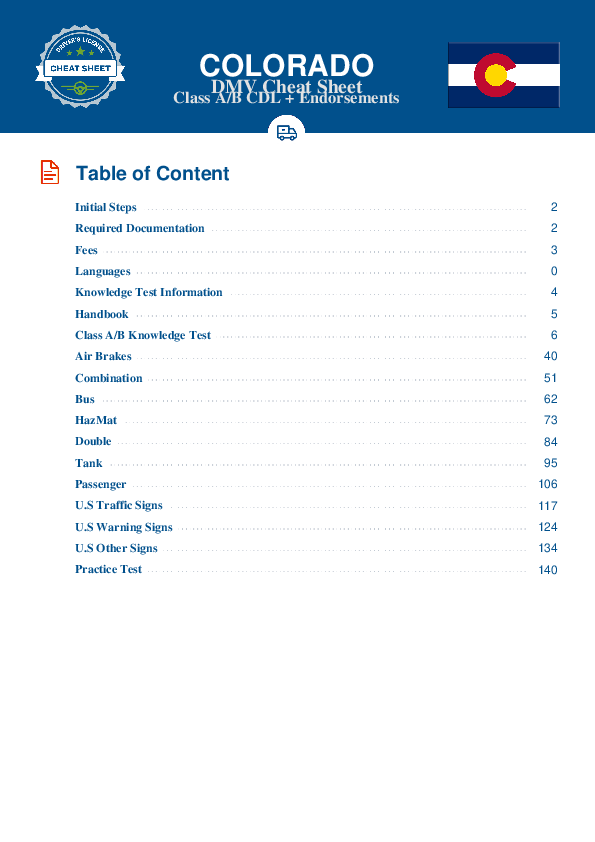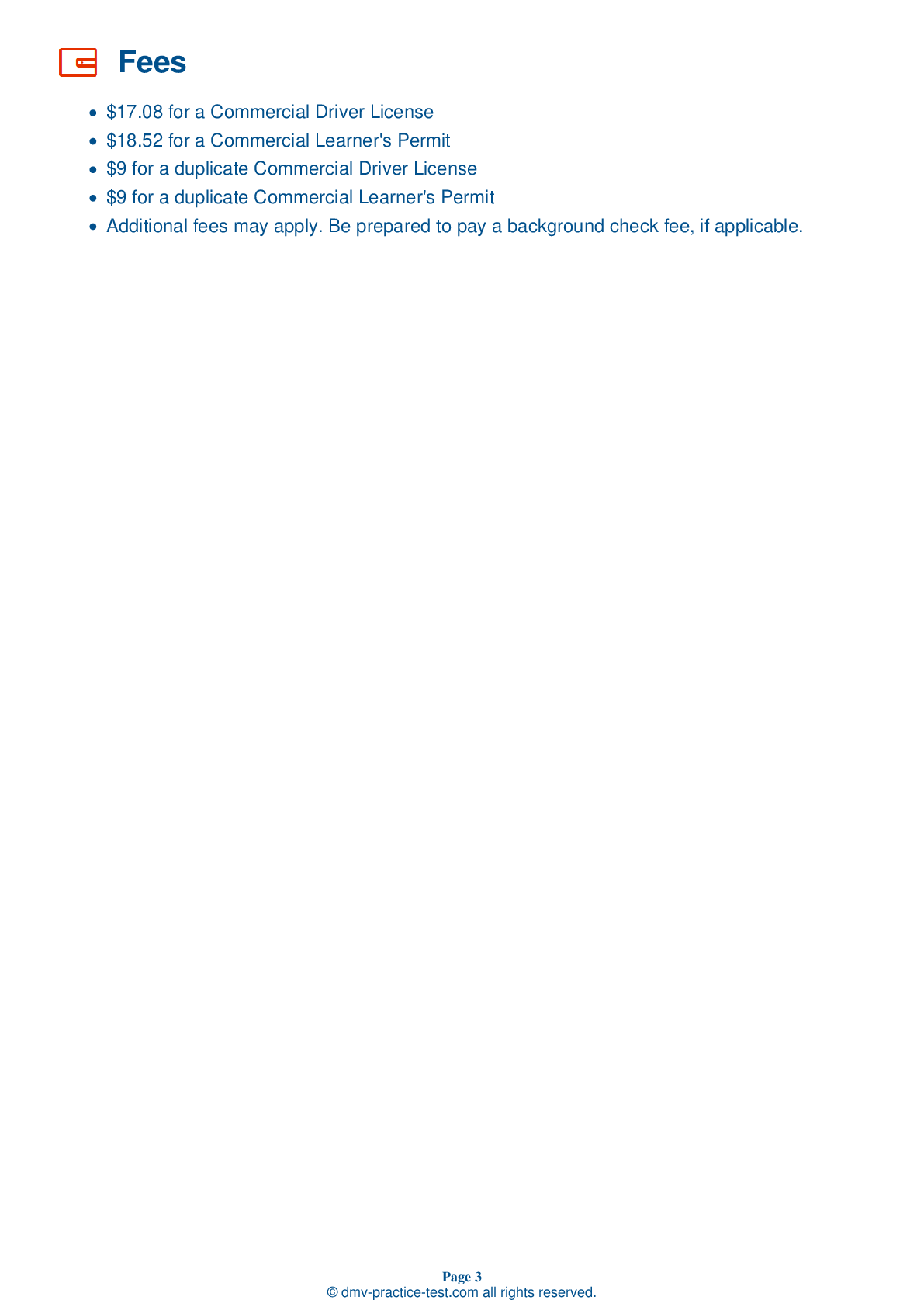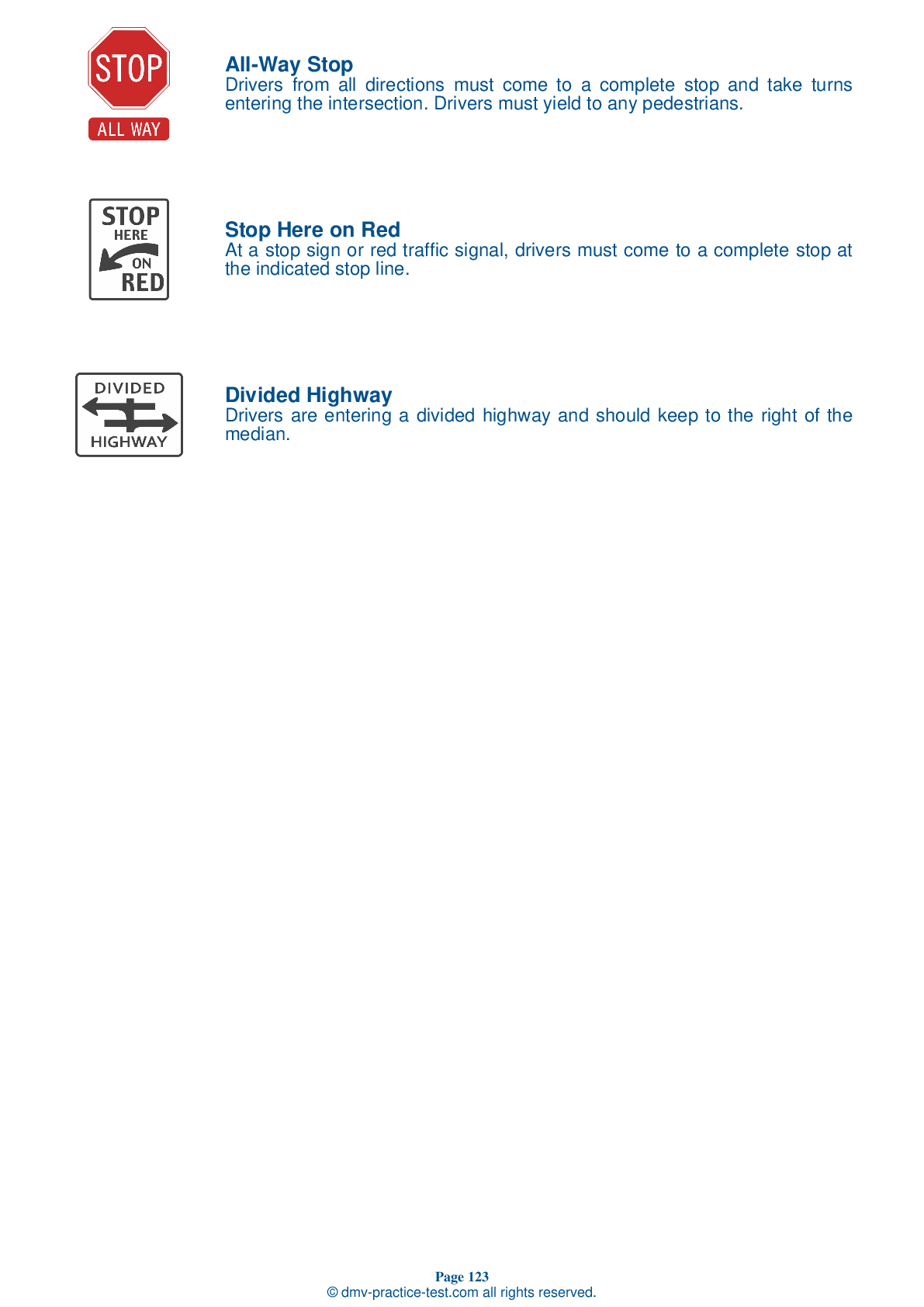Passenger #1
Passenger Endorsement | Colorado 2025 #1 Page 2 of 3
Train for FREE with our Colorado CDL passenger endorsement practice test online. The official exam test consists of several obligatory parts, with all of them checking your knowledge of different blocks of road rules. If you need to obtain a CO DMV passenger endorsement in 2025, practice as much as possible. Free sample tests published on our website will help you check and improve your knowledge and boost your grades. Please bear in mind that DMV requirements for issuing a CDL permit with passenger endorsement may vary from state to state.
20
16
20
8 . An example of mandatory emergency equipment is:
A supply of fireworks.
Mandatory emergency equipment includes: at least one fire extinguisher; spare electrical fuses (unless the vehicle is equipped with circuit breakers); and warning devices for parked vehicles (such as reflective triangles).
9 . The stairwell of a bus:
Must remain clear at all times.
The aisles and stairwell of a bus must be kept clear at all times. Do not let passengers use these areas to store additional baggage.
10 . When asked to complete a driver's side parallel parking maneuver, you should:
Back into the parking space without passing it first.
You may be asked to complete a parallel parking maneuver into a parking space that is to the left of your vehicle. You should drive past the parking space before backing into it while bringing the rear of your vehicle as close to the rear of the space as possible. Your vehicle should be completely within the boundaries of the space.
11 . How much water must be present for a vehicle to hydroplane?
None
Hydroplaning is a phenomenon during which a vehicle's tires lose traction with the road surface and begin to glide along on water on the road. There does not have to be a large amount of water on the road for this to occur.
12 . When driving, it is important to:
Look to the front, sides, and rear of your vehicle.
For safe driving, it is essential that you are aware of what is happening on all sides of your vehicle. In addition to watching the road ahead, you should frequently check your mirrors to monitor the road to the sides and to the rear of your vehicle.
13 . A bus driver must have a CDL if driving a vehicle designed to transport at least ____ occupants.
58
A person must have CDL to operate a vehicle designed to carry 16 or more people, not including the driver.
14 . If a bus has a brake and accelerator interlock system, the system should:
Operate the rear door.




